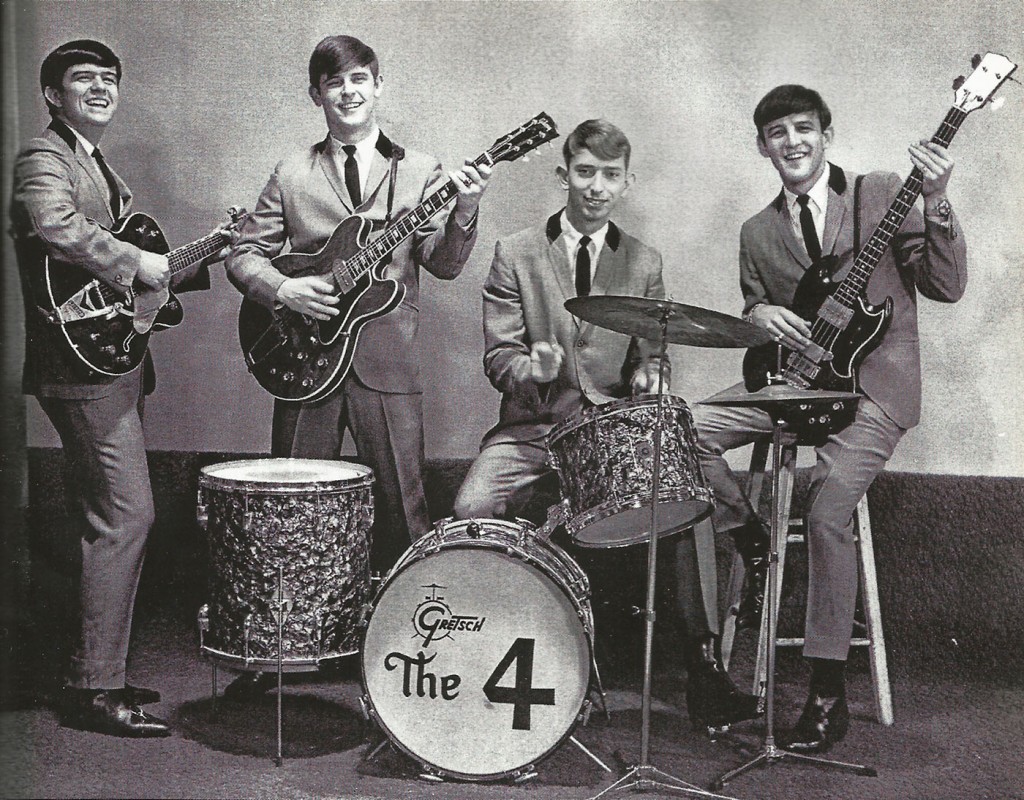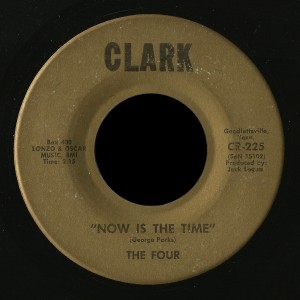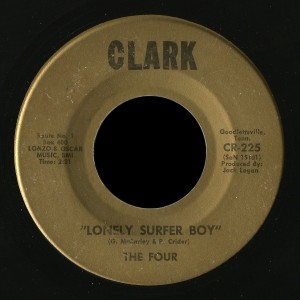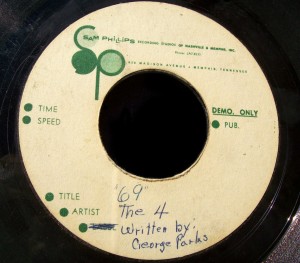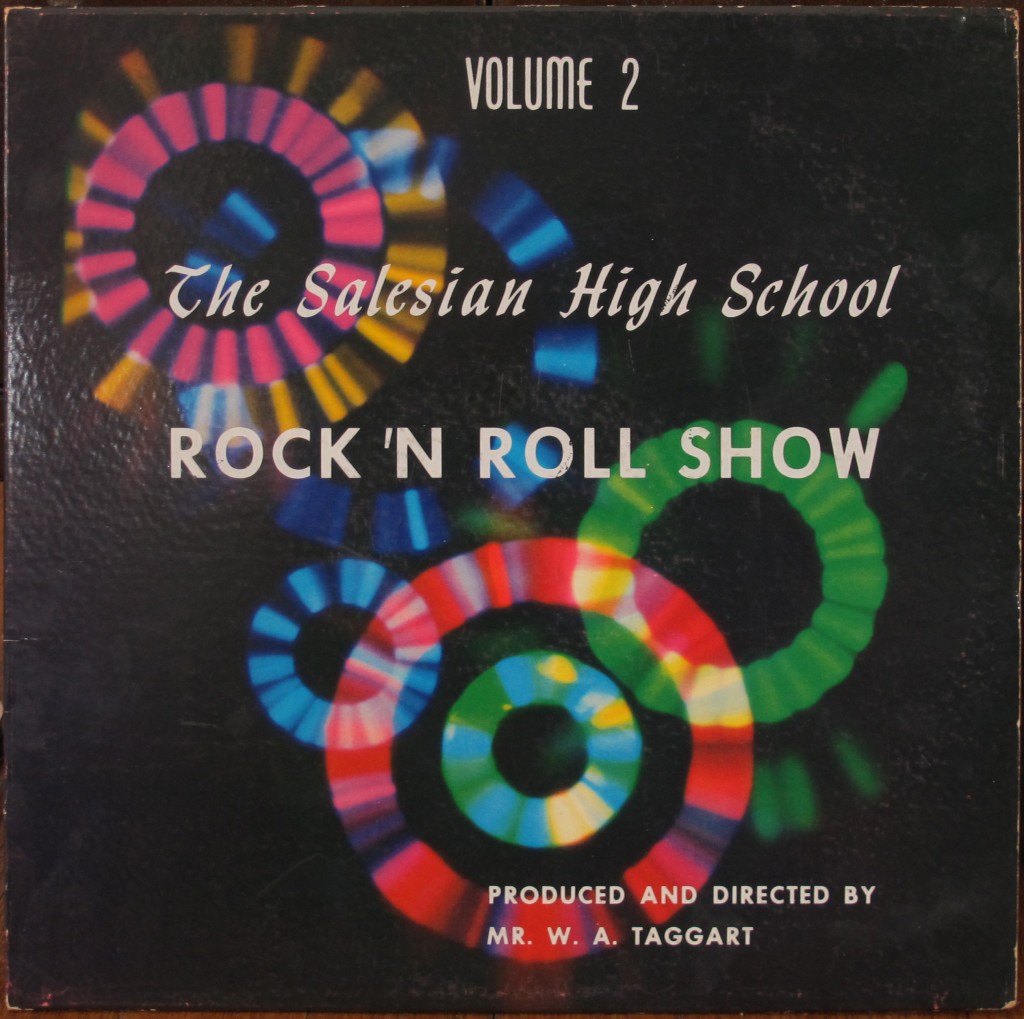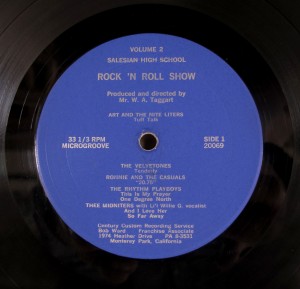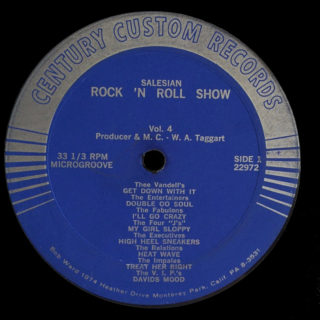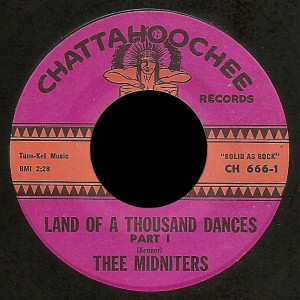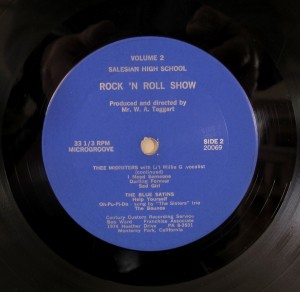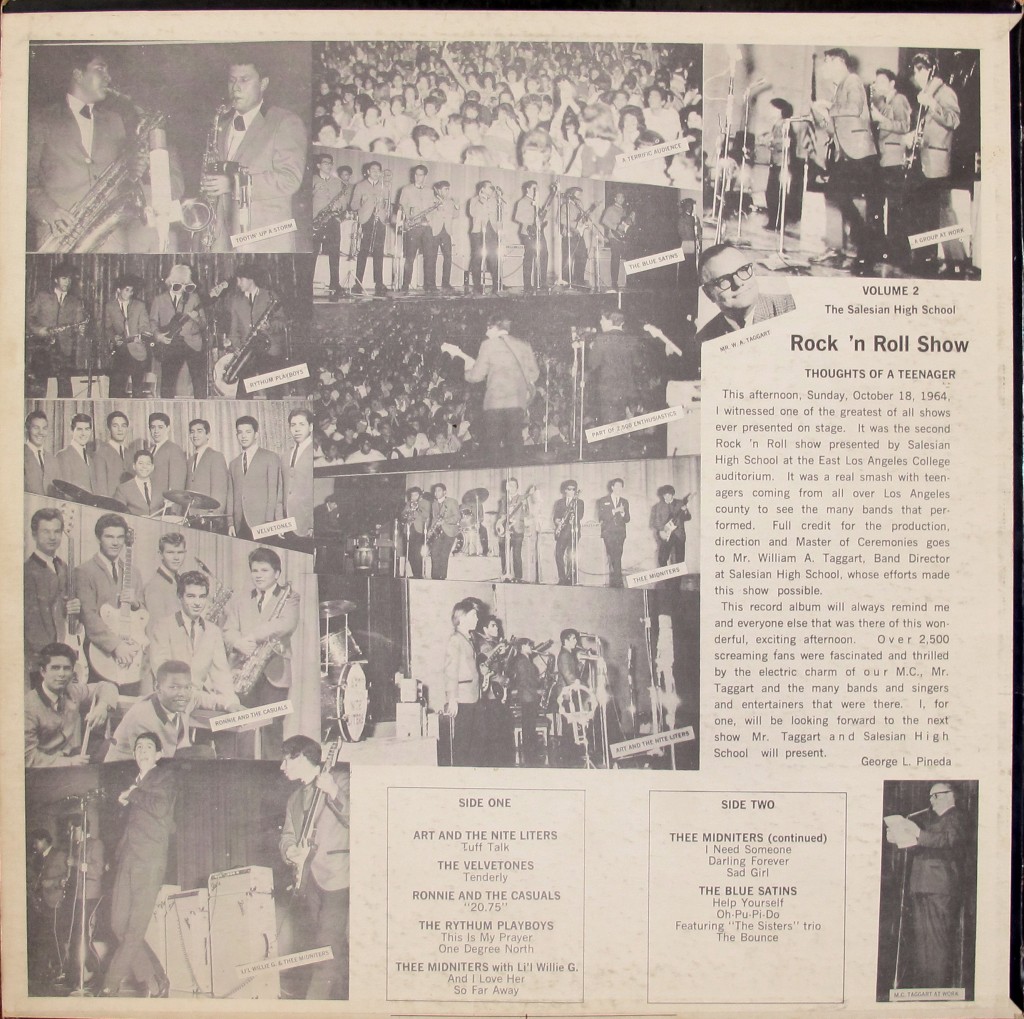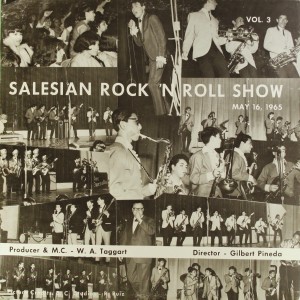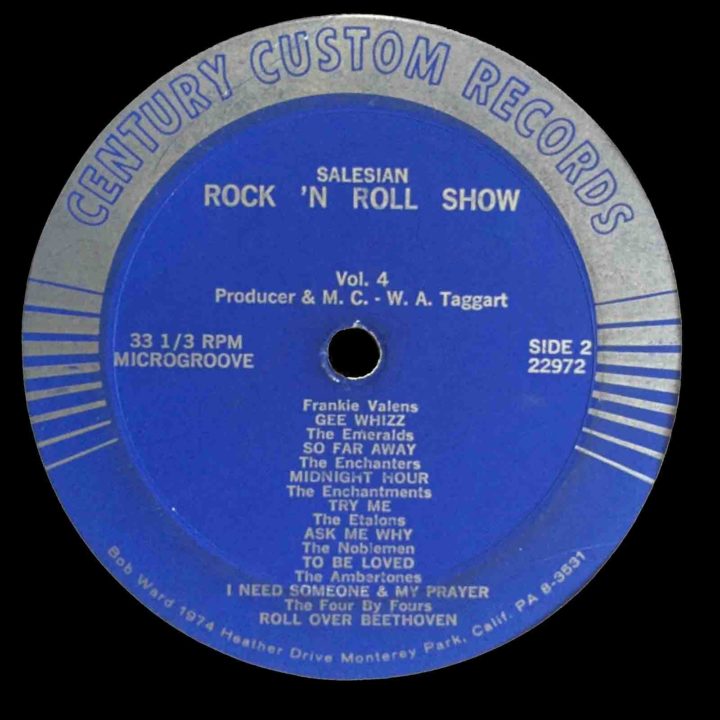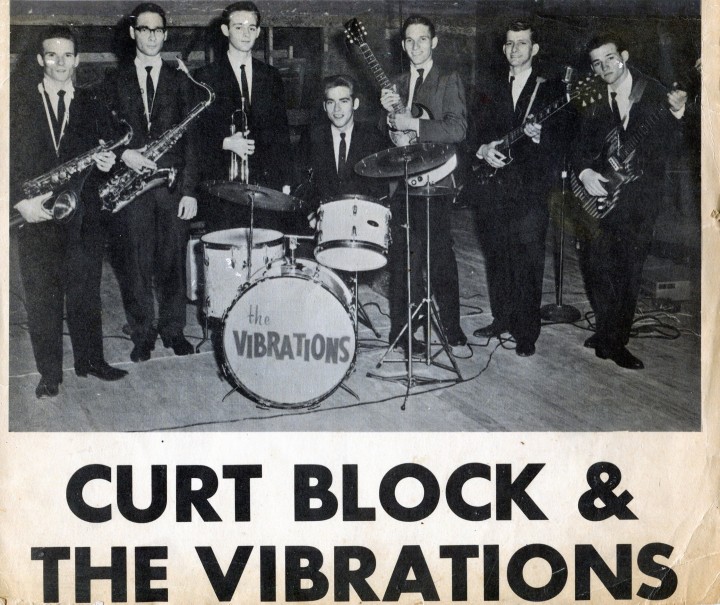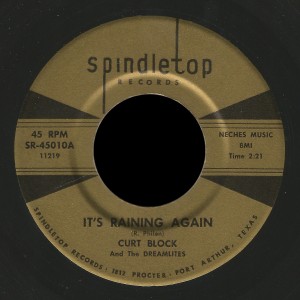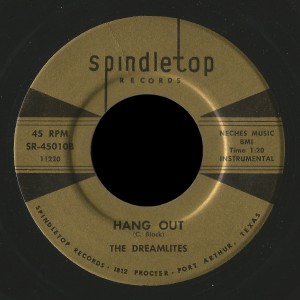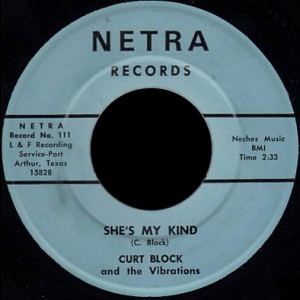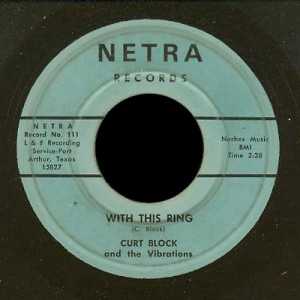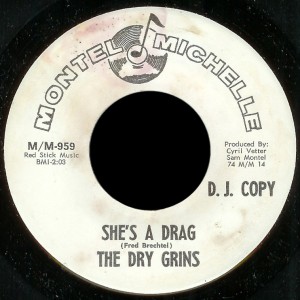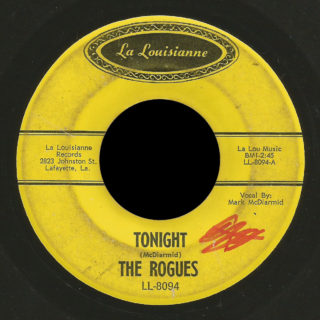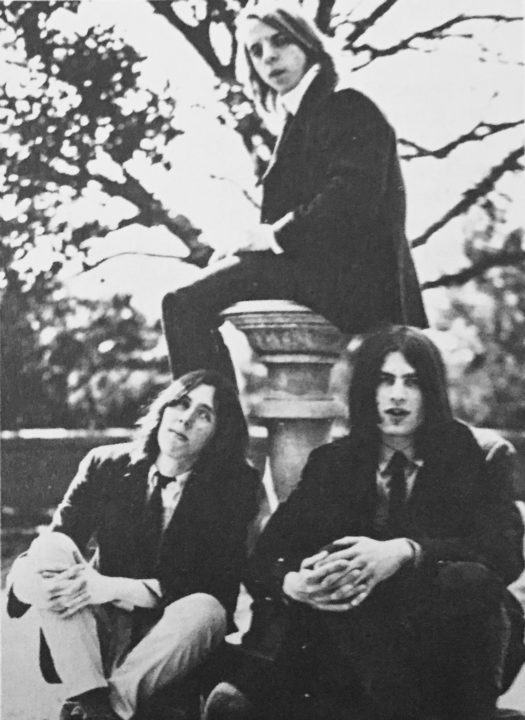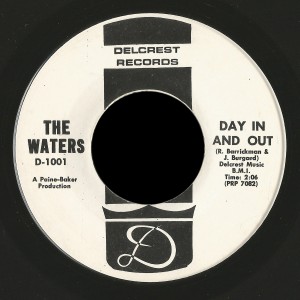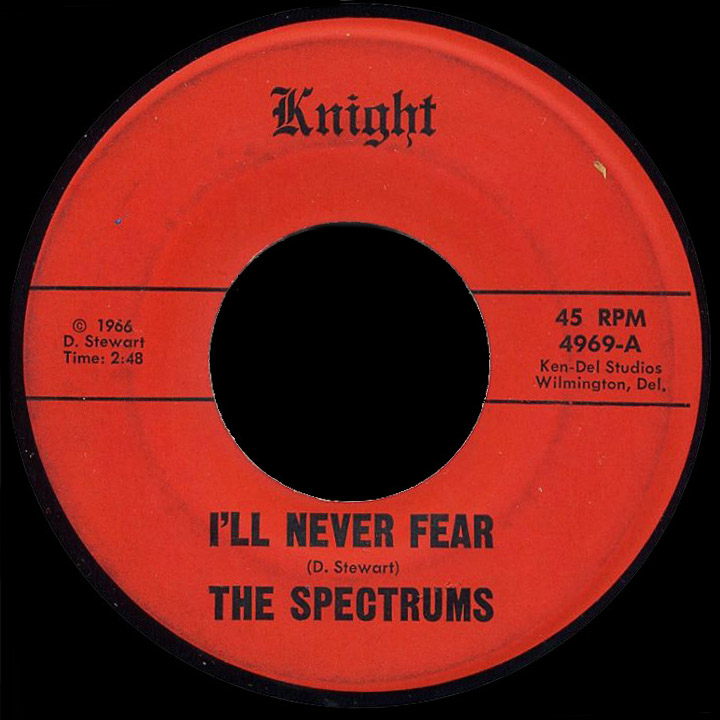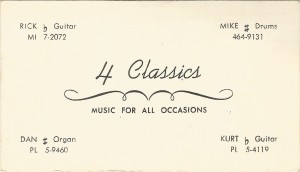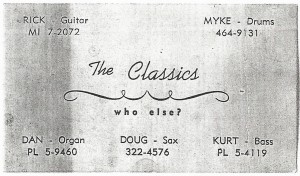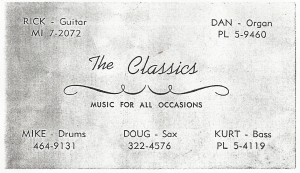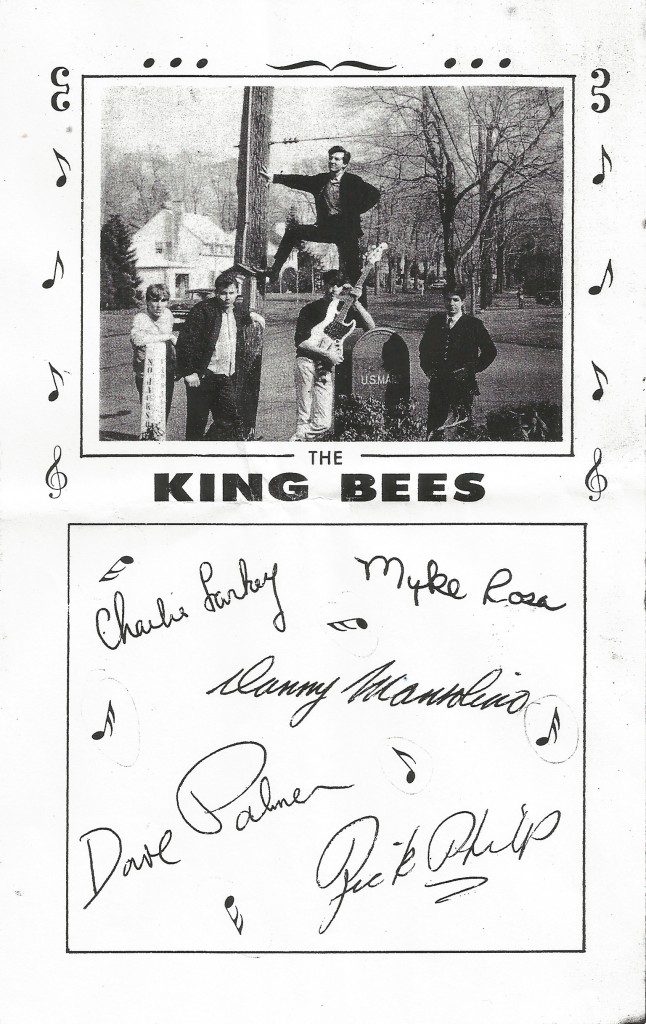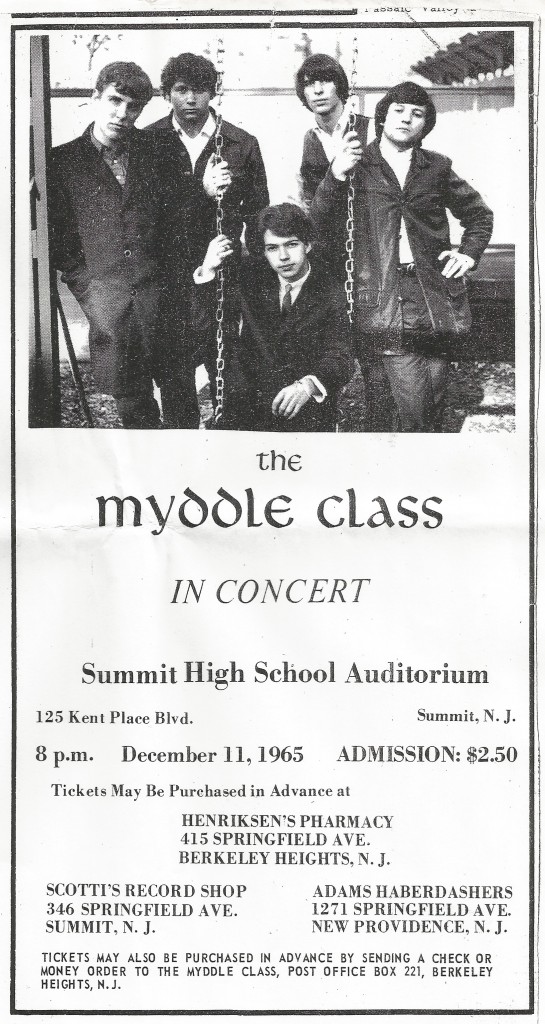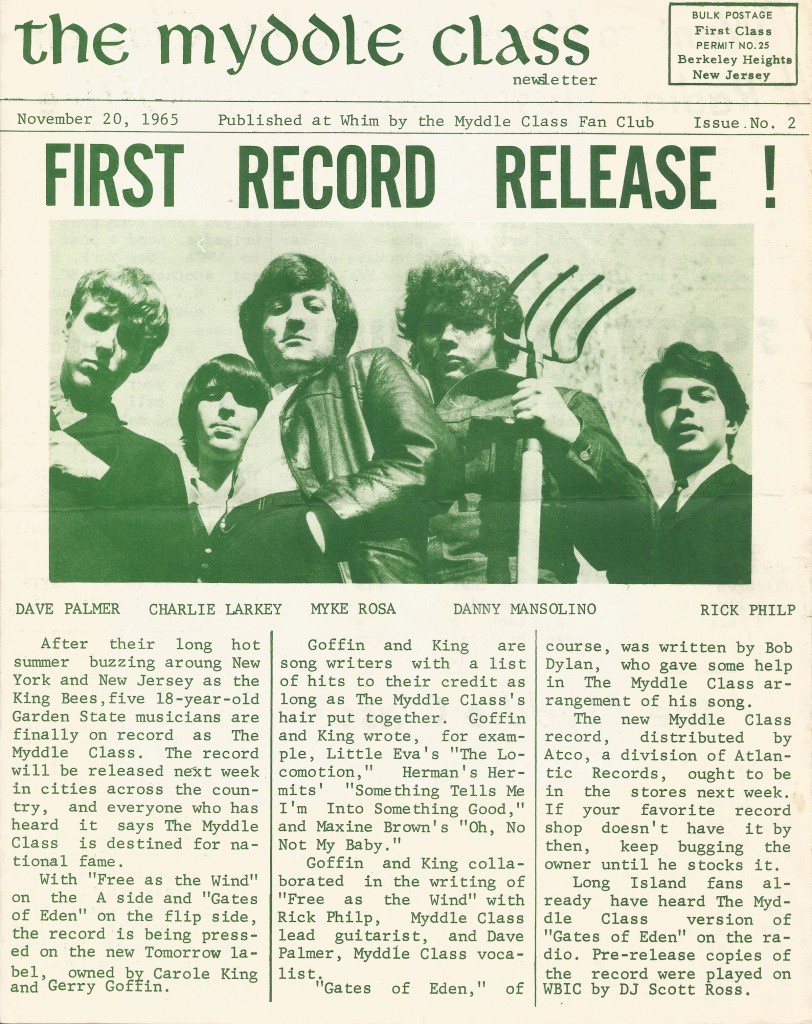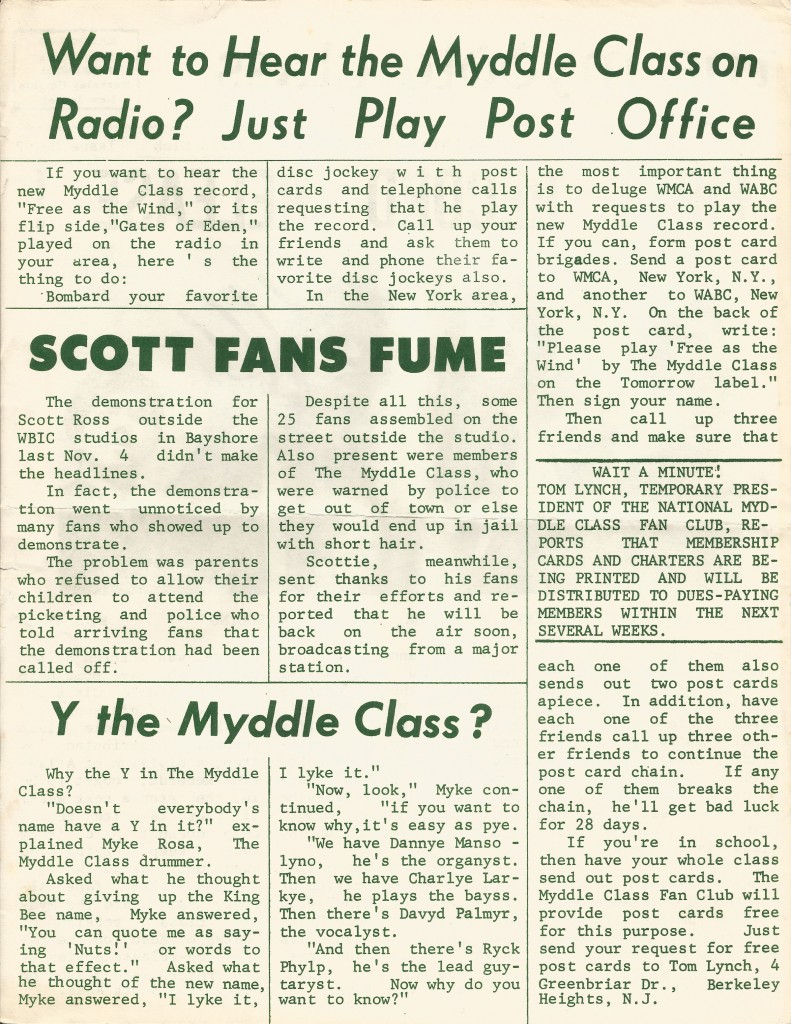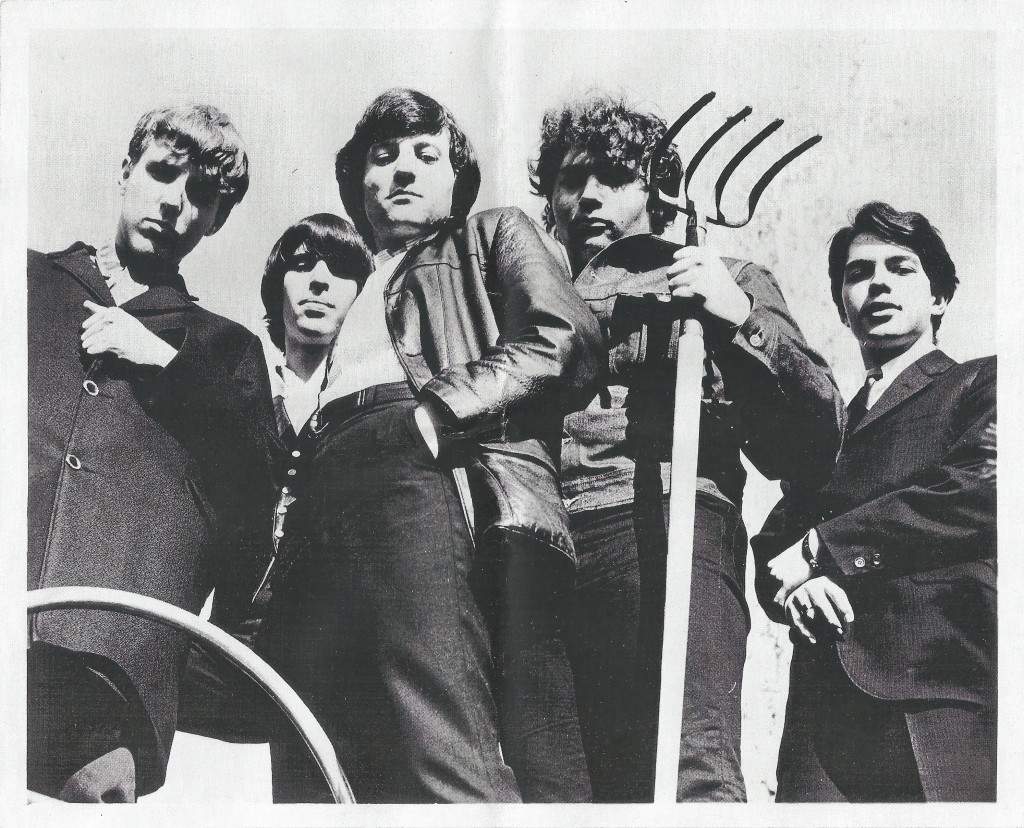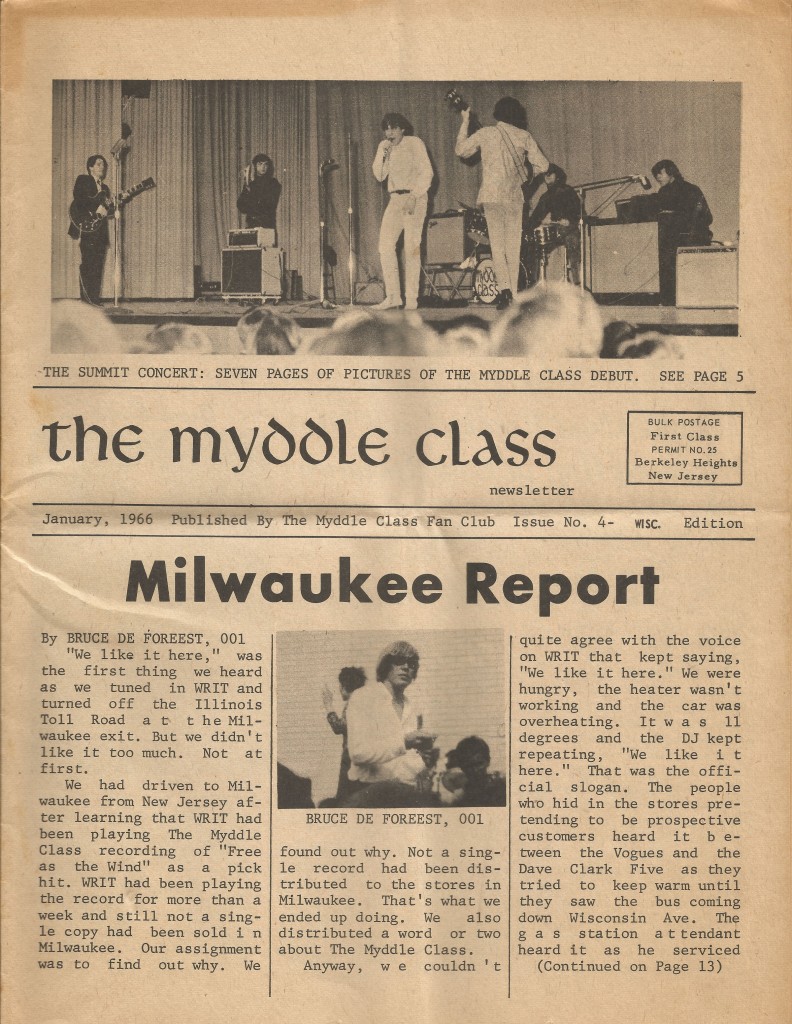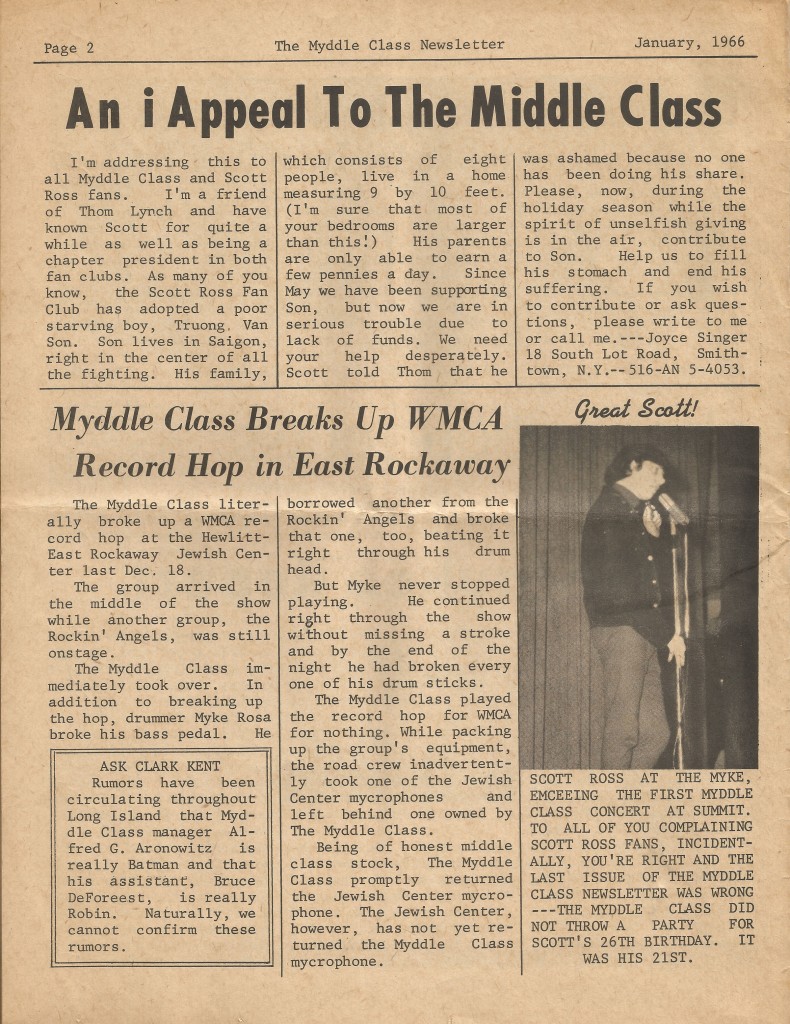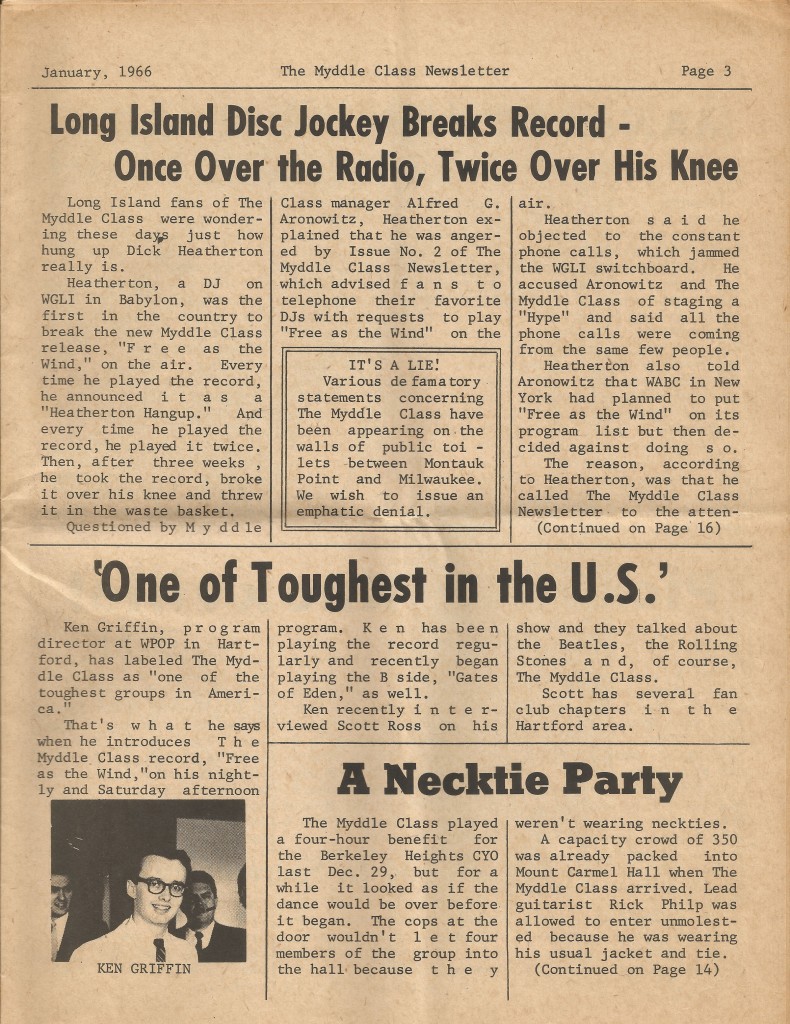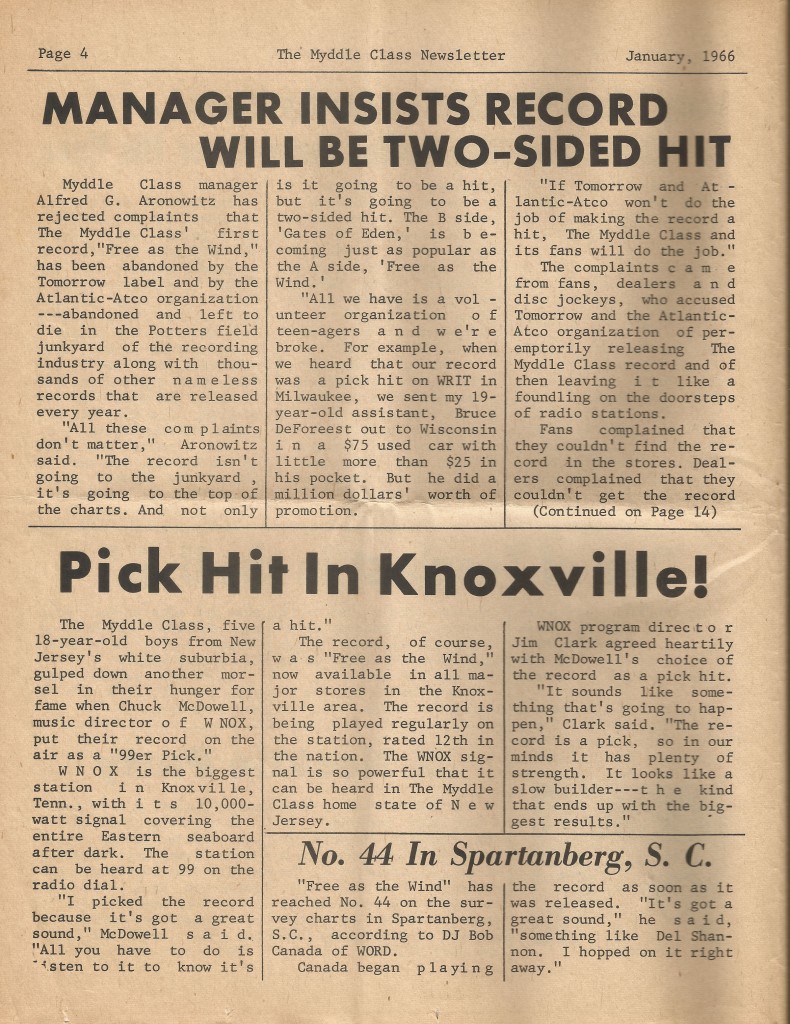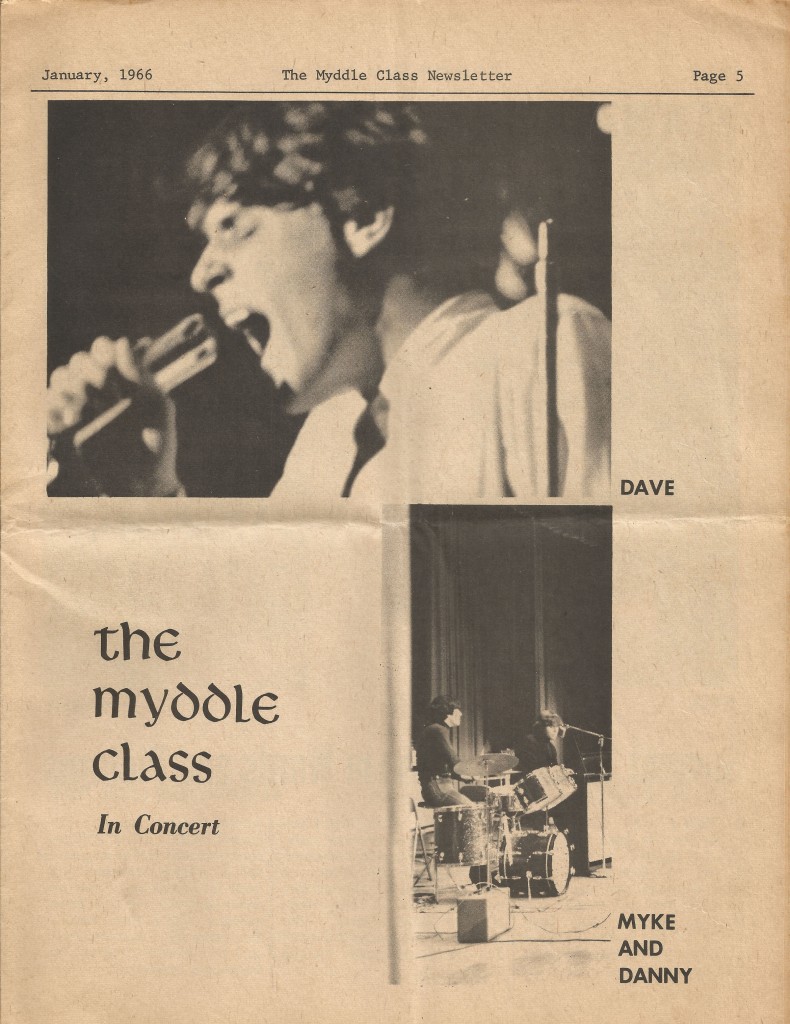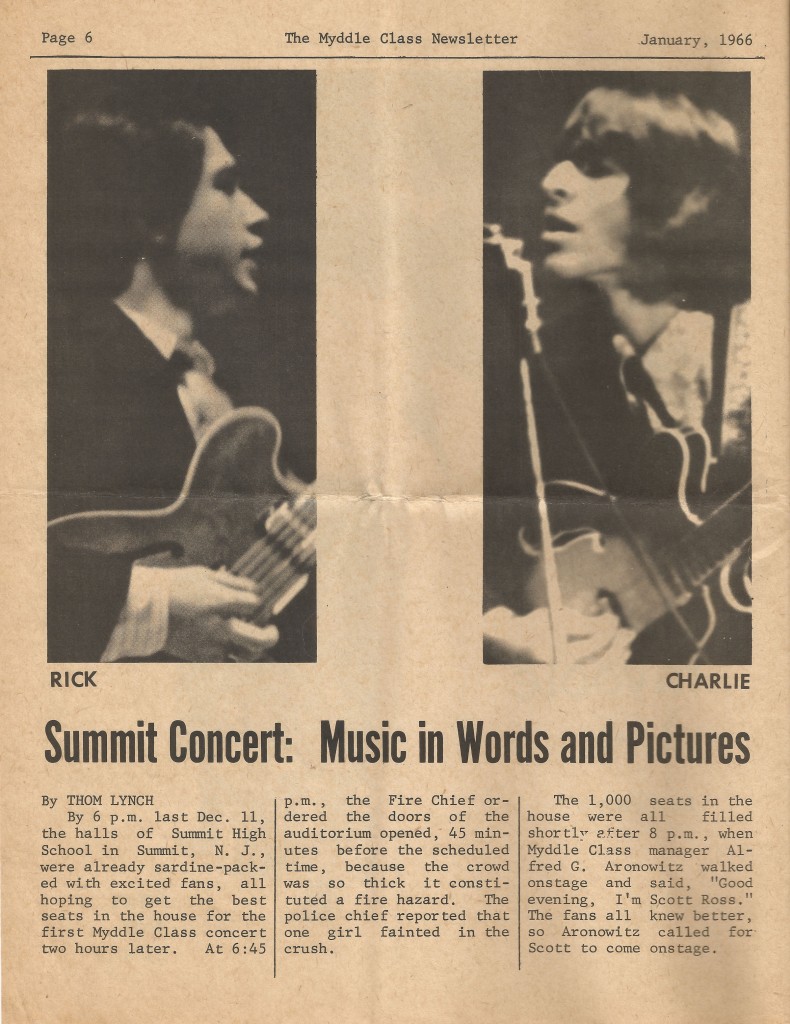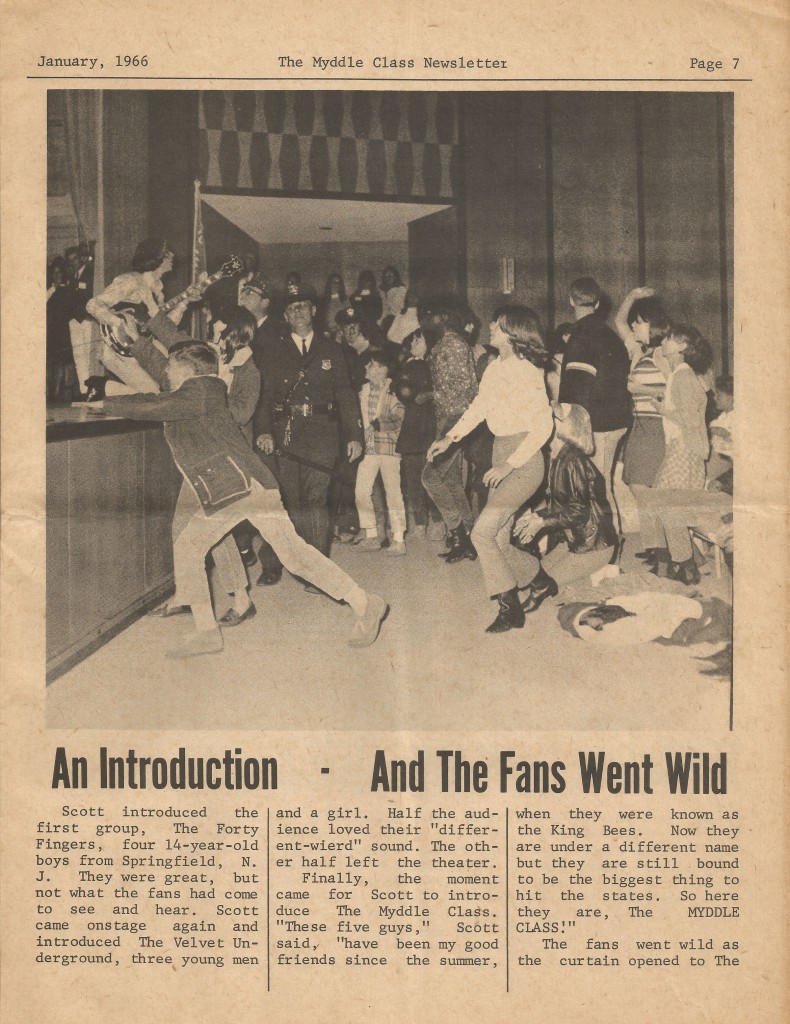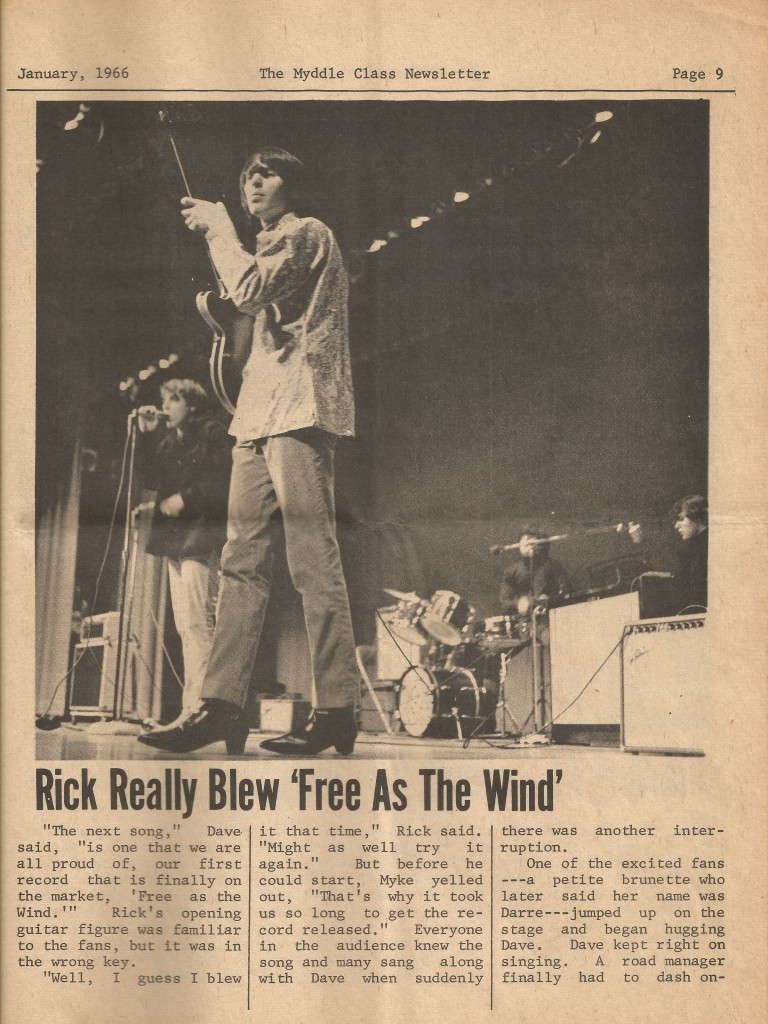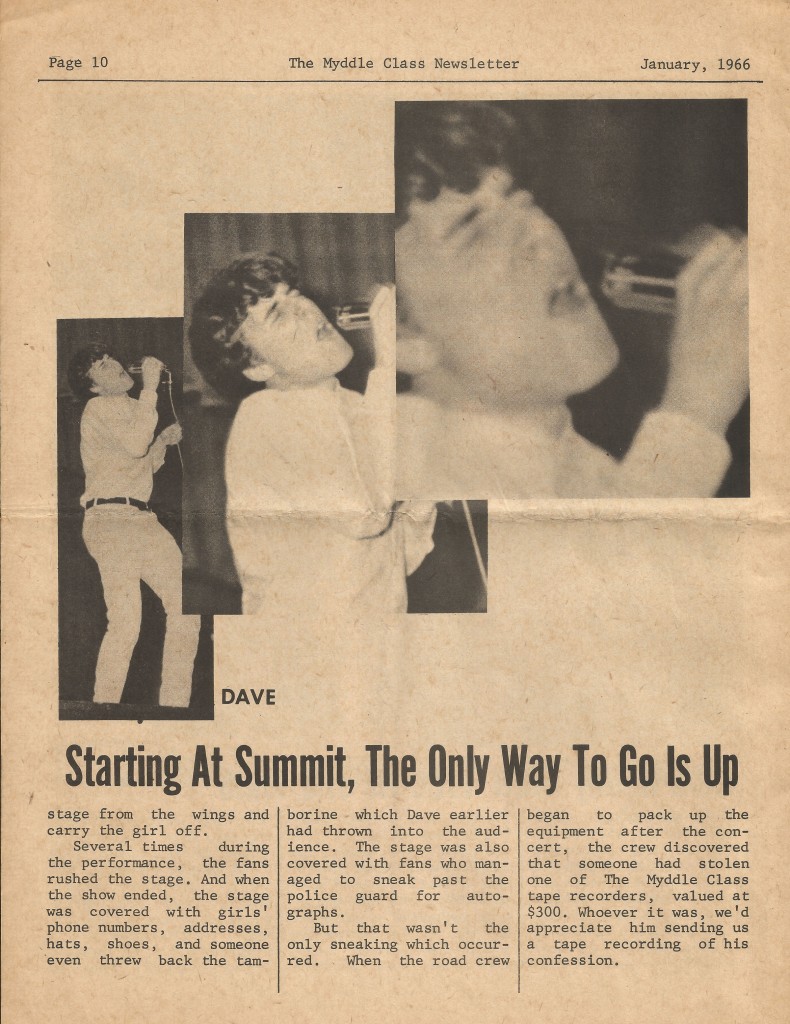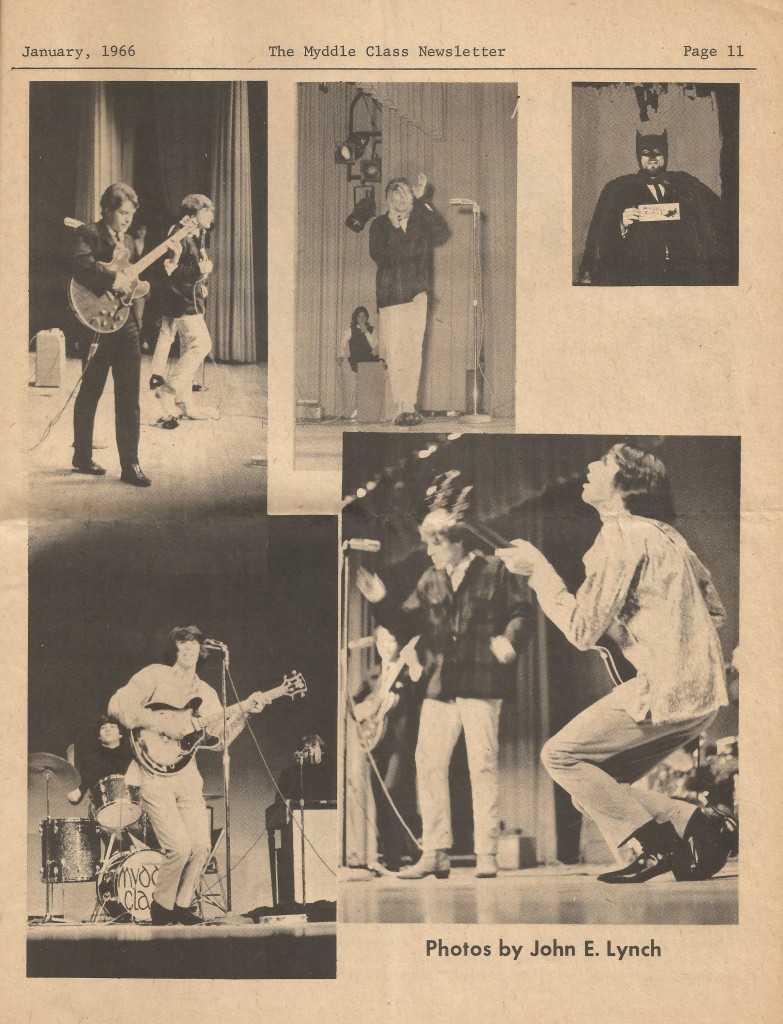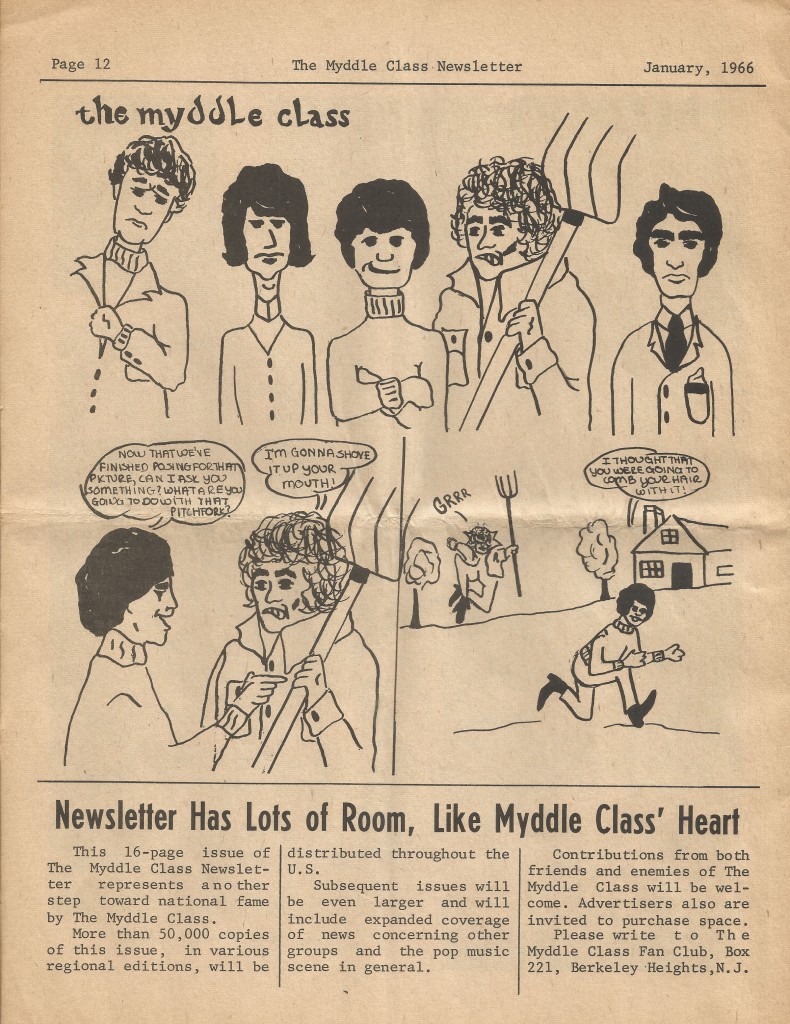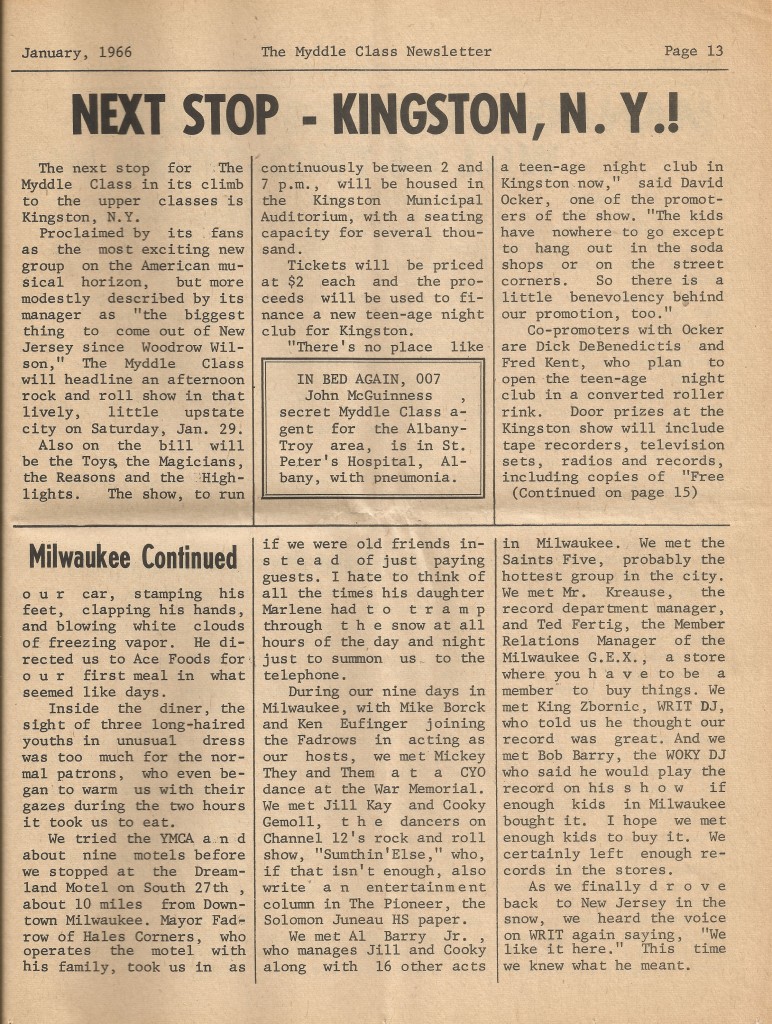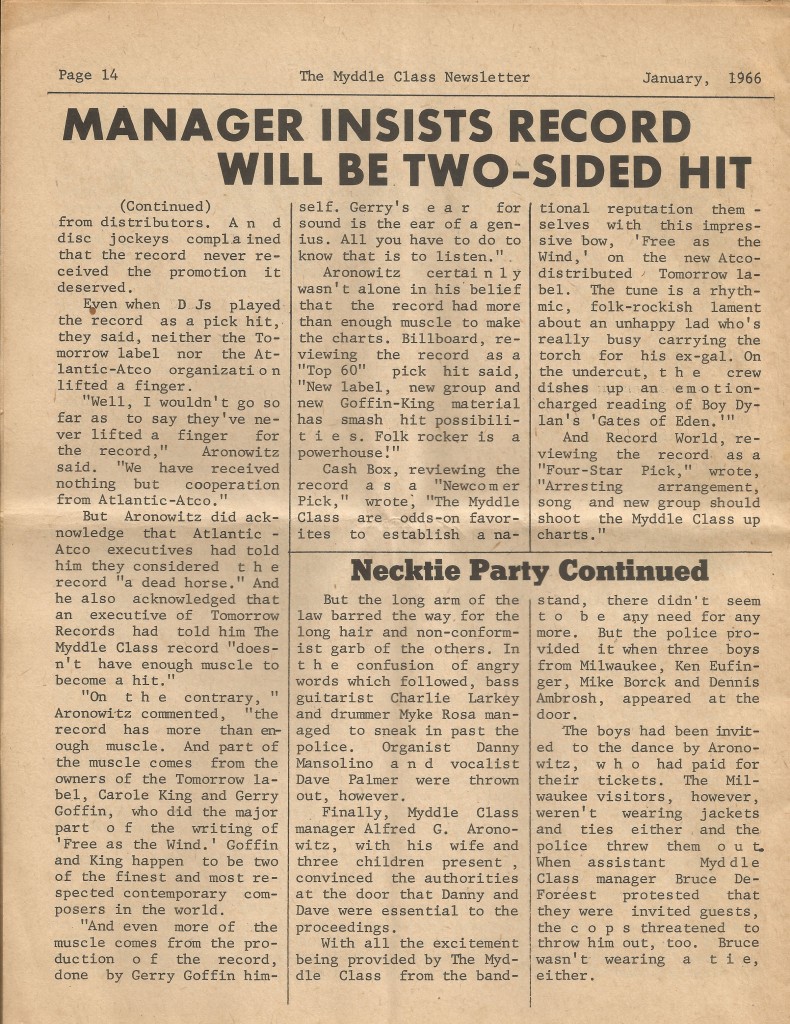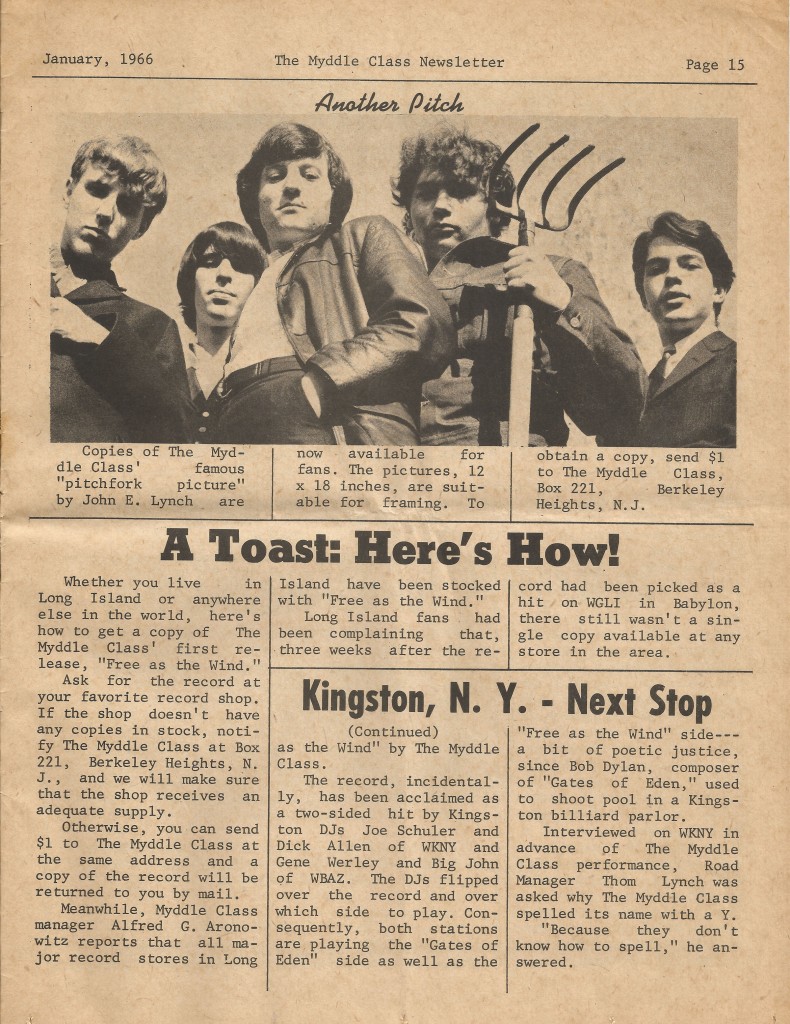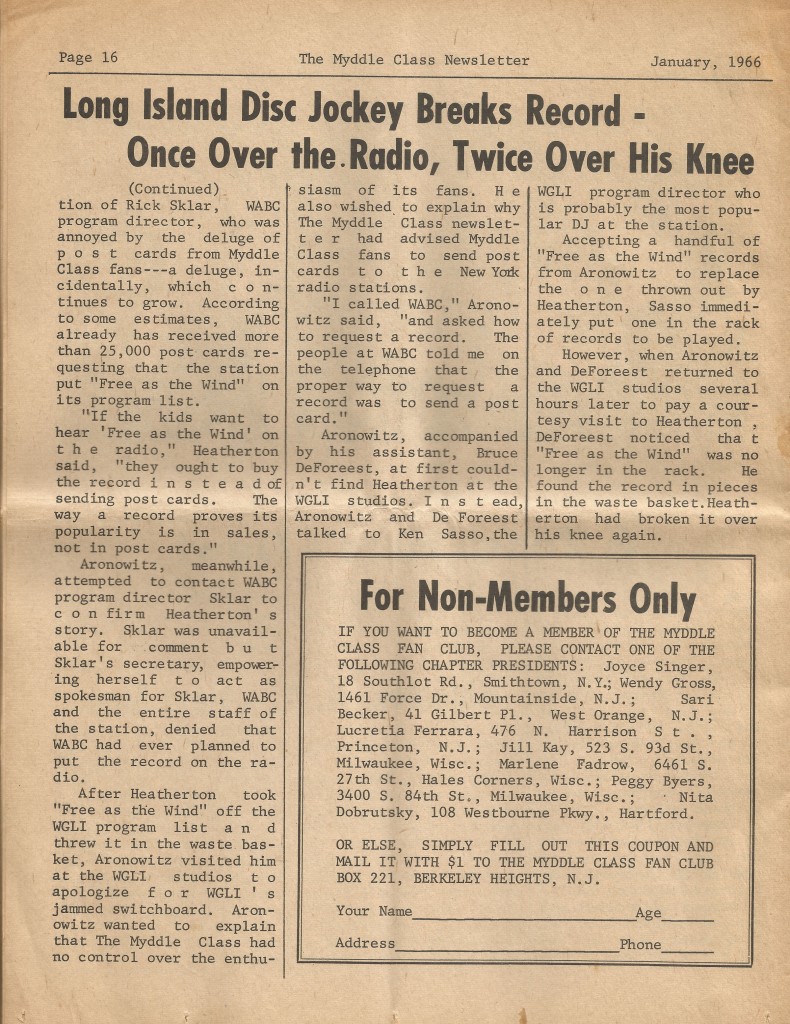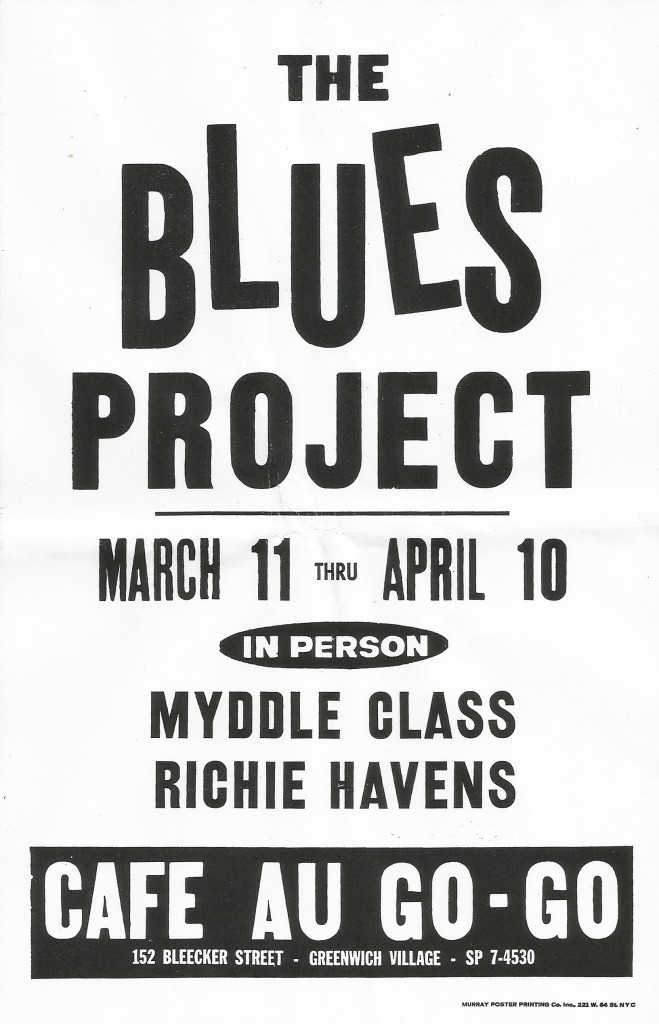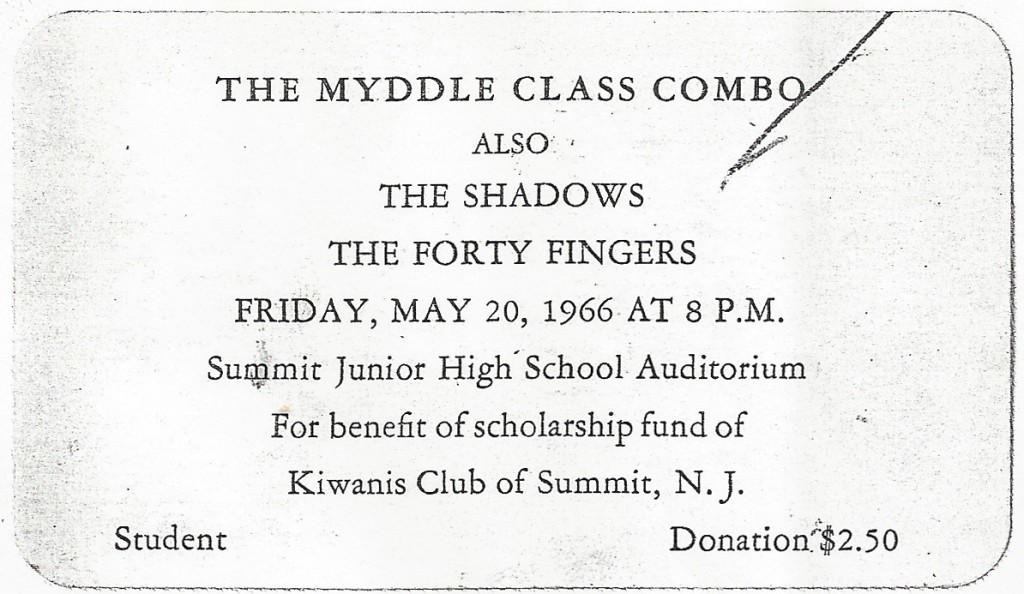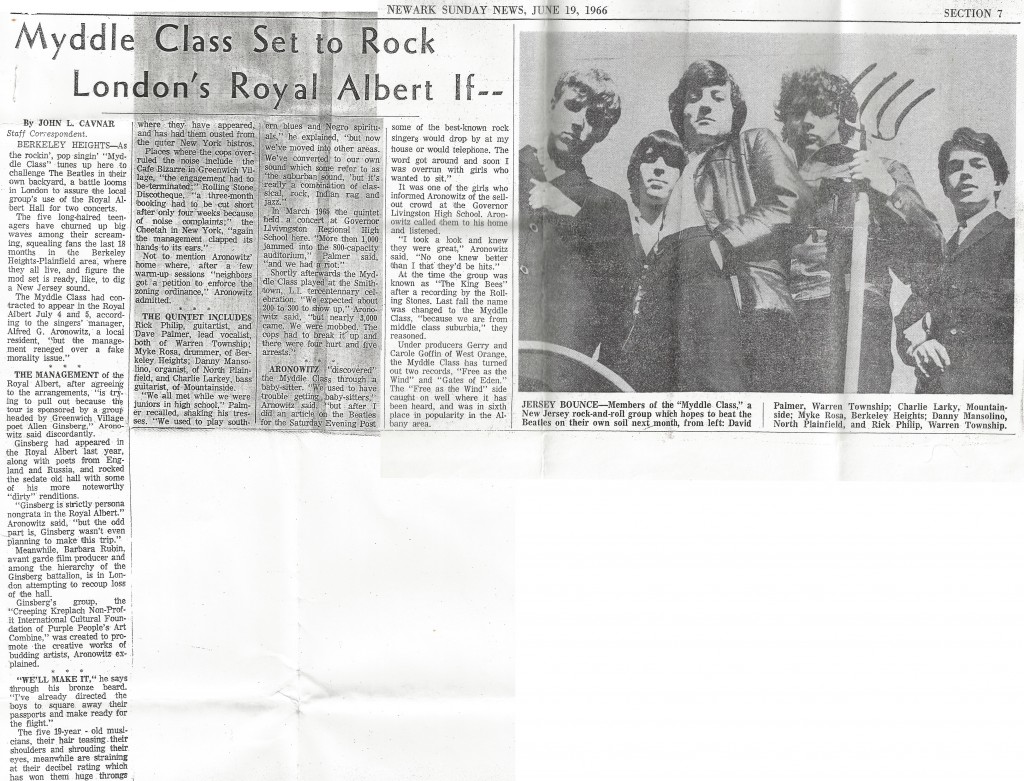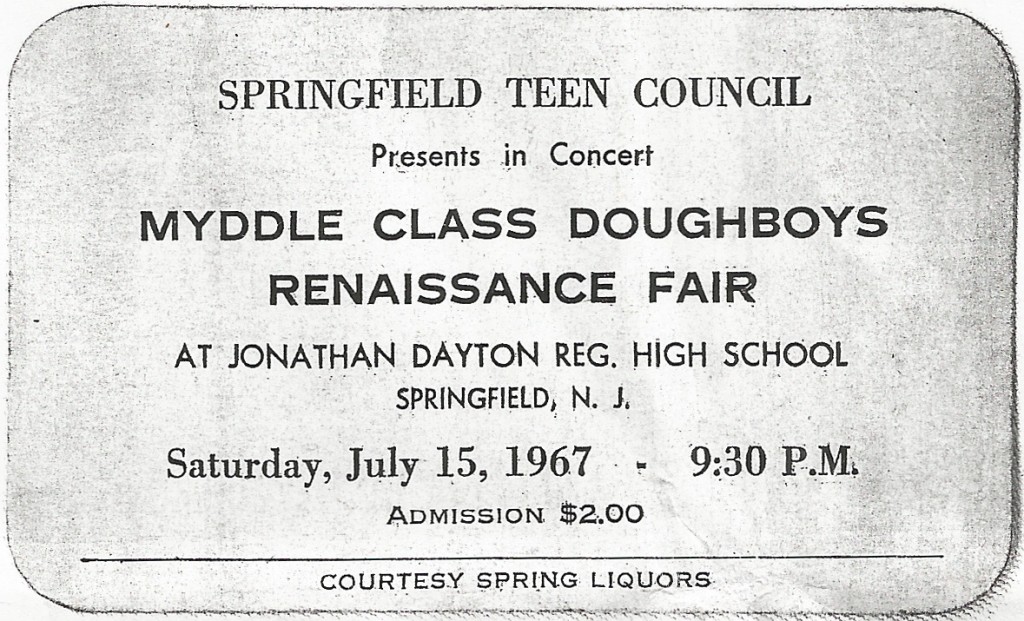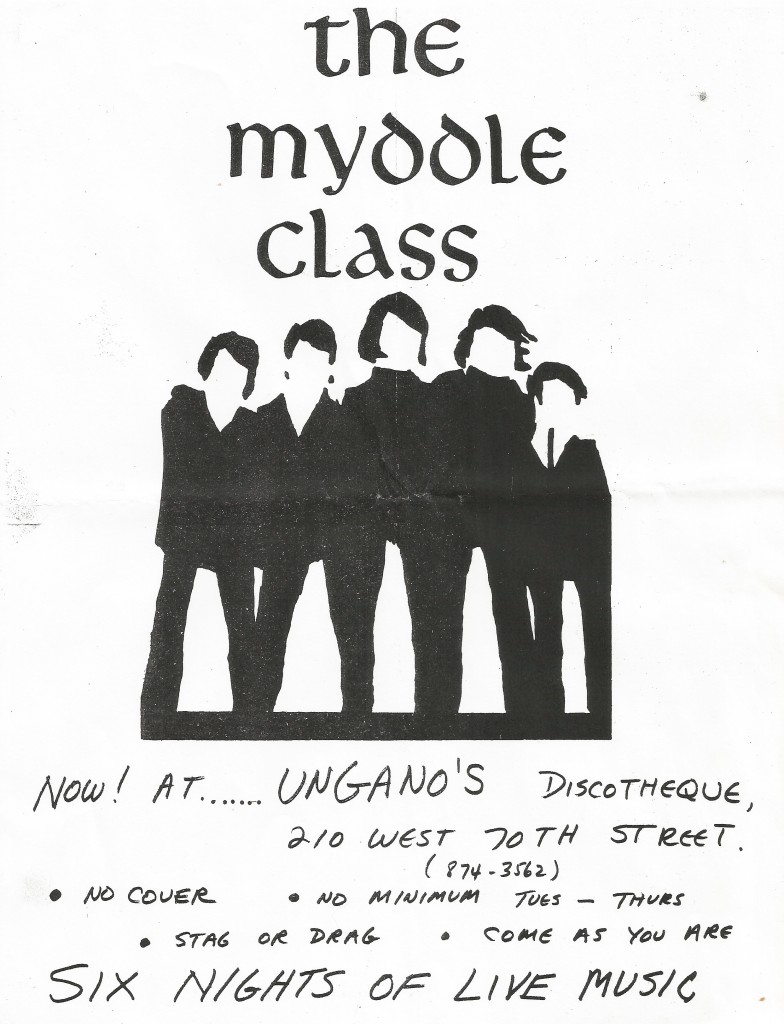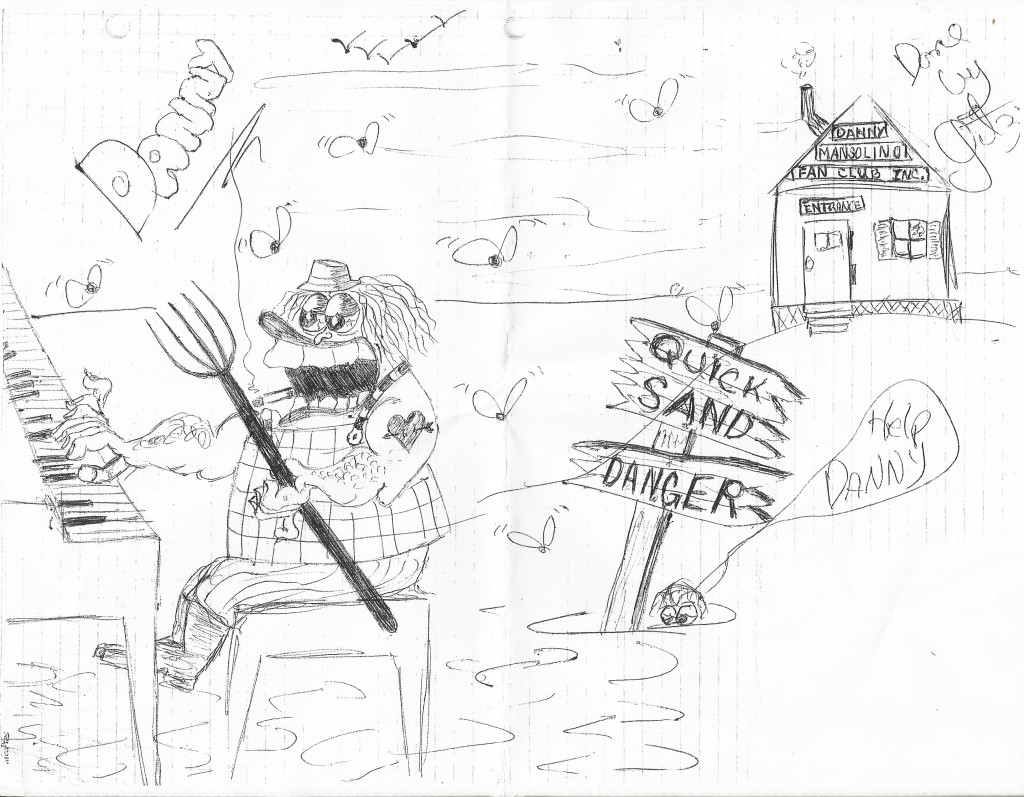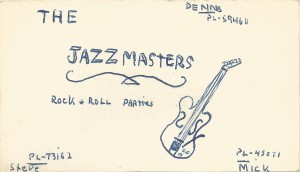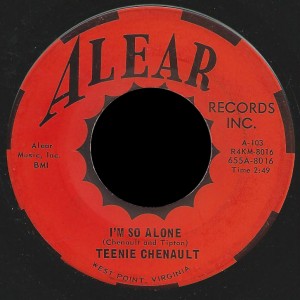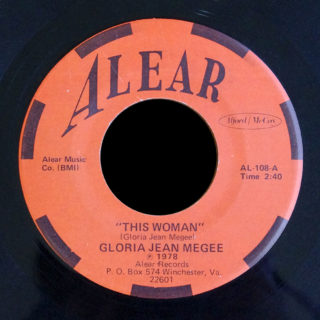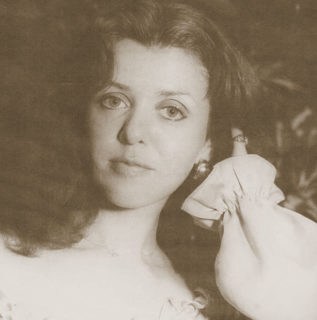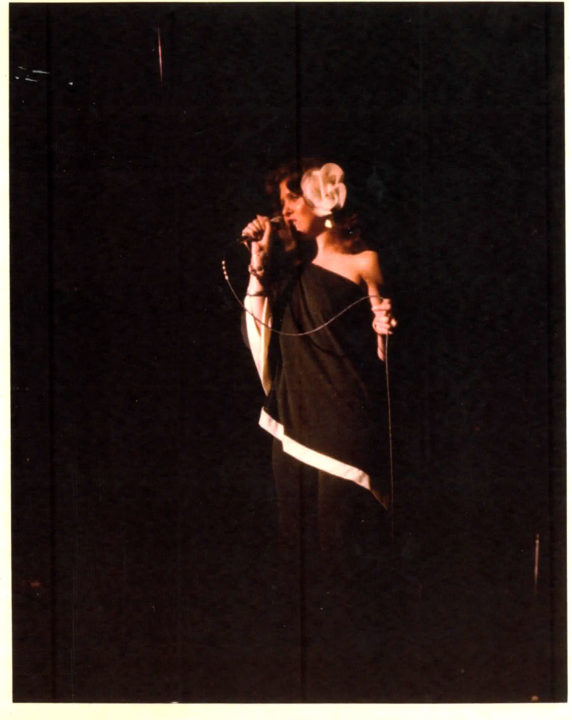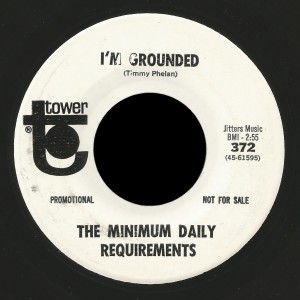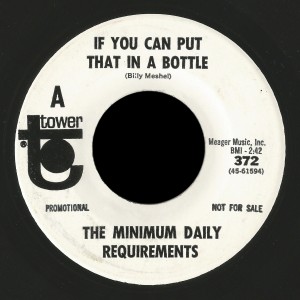The Virgil Caine album was ignored outside Southern Virginia on its initial release in 1971. But the low-tech masterpiece has finally gained an audience through the internet and the LP has become one of the most sought-after artifacts by collectors of private pressings.
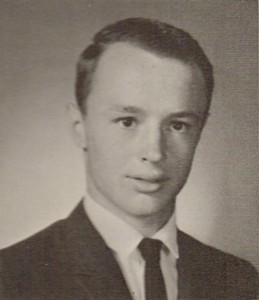
I first heard the songs around the summer of 1971 at the Euphoria Music Emporium, a record/head shop in my hometown of Danville, Va. My best friend and I were regulars and owner Steve Wilson motioned for us to step to the turntable one afternoon, saying he wanted us to listen to the strangest album he had ever heard. He played us “Swamp Witch,” and the chorus stuck in my head for days.
The stark photo on the cover was black and white and none of these guys looked like any rock band I’d ever seen. The short man in the middle could pass for a banker or a college professor and was wearing Buddy Holly glasses. He was flanked by a scruffy looking dude dressed like a house painter and a tall teenager in an ill-fitting hat who looked strangely out of place.
Copies of the album sat in the store on consignment for several months, but there were few takers.
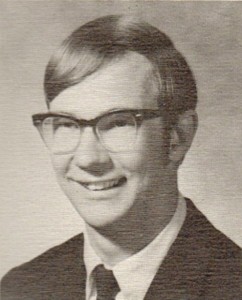
I had all but forgotten about it until I chanced upon a water-damaged copy at a yard sale 20 years later. But the jacket yielded few clues and my search for the band’s origins continued for another 20 years, when a blog posting led me to the group’s surviving songwriter and the man who recorded the album, both linked by a tiny town in the Blue Ridge Mountains.
While Floyd, Va. has become a regional destination for bluegrass music and a large counter-culture movement, the town of today bears little resemblance to the Floyd where the members of Virgil Caine — Roger Mannon, Larry Janney, Eddie Eanes and Paul Talley — grew up in the sixties. Jim Scott moved to Southwest Virginia from Connecticut in 1966. All attended Floyd County High — the only high school in the County, which today has a population of just 15,000 — in a community where Talley says “everybody knows everybody.” Mannon, Eanes and Scott graduated in 1968, Janney and Talley two years later.
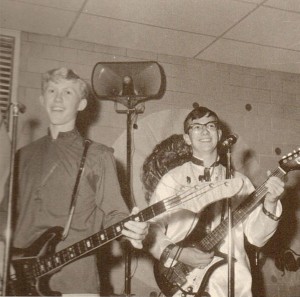
Paul knew Larry casually in elementary school, but the two became fast friends in 8th grade when Larry ended up with two tickets to a Beach Boys concert and asked Paul to tag along. At the time, Paul was learning the guitar and Larry was already playing. When Jim moved to Floyd, he joined the Crypt Kickers with Larry, who also played the drums. As Scott recalls, his involvement started when “one of the guys in the band brought his guitar on the bus one day and we started playing songs and he said: ‘Hey, you can play. Could you join us?’ And so we kind of played around and just a little garage band and did some local rock and roll at the time, the Beatles and that sort of thing that was popular for dances. And seems like we played a couple of sock hops up at the high school and we may have played either a senior dance or a prom up there as well. This would’ve been around 1966-’67.” Scott was in school with the other three and would later play bass on the album, but says he “barely knew them” then.
Talley, who engineered the album, played rhythm guitar in another Floyd band, “The Electric Theater,” a seven-piece group with horns.
Mannon played on the basketball team but is best remembered for the poetry he wrote for the school magazine.
Eddie Eanes, who died in 1995, co-wrote almost all of the songs on the album and is listed as the sole writer of one of the LP’s most memorable tracks, “Swamp Witch,” although Mannon says the group added the refrain without his knowledge. Roger says the two were best friends in high school and Eddie took up guitar when the Beatles hit. The pair collaborated on songs but Roger says that “about the time we were ready to do something, he finished school and moved away.”
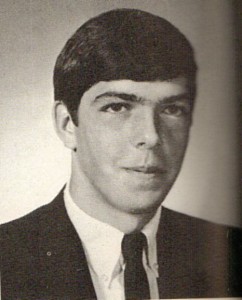
After graduation, Eddie moved for a job to Maryland and later to New Orleans. Roger recalls that one of those early jobs was the inspiration for “Swamp Witch,” which was about voodoo and his time “on an oil rig (where) he got in a lot of that Southern Louisiana kind of backdrop with the Bayous and the country down there and that was primarily inspired by his time being down there, right after he left Floyd.”
Paul remembers Eddie as a “real wild child.” Jim calls that a fair assessment, describing Eddie as “a child of the sixties before the rest of Floyd caught on to it. Floyd, when I moved there in the mid-60s seemed to be about ten years behind the New England towns that I grew up in. You know, mini skirts weren’t popular yet. Nobody was smoking dope yet; they were just back ten, fifteen years earlier. And Eddie seemed to be more on tune with the rest of civilization at that time.”
Eddie lived down the street from Larry, but Janney had no idea Eanes had co-written the songs on the album until he saw the finished product.
By 1970, Roger was a student at Virginia Tech in Blacksburg, where he met Mike Campbell, an English professor at Tech who played lead guitar on the album. Roger remembers that Mike “was an avid musician and anytime you went to class and you asked something about a Beatles album or a Bob Dylan album, he’d spend the whole class time talking about music rather than English Literature. So, it was a fun class in that it essentially turned into a music appreciation rather than an English class.” When Roger started talking about recording an album, Mike mentioned that he played guitar and “would like to sit in.”
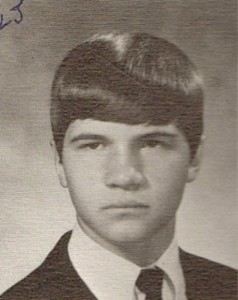
Larry and Paul graduated from high school in June 1970 and both enrolled at Danville Community College in the fall, Larry as a Computer Science major and Paul in Business.
It was during this period that sessions for the album began in Christiansburg (twenty miles north of Floyd) where Janney’s family had moved following his father’s death. Larry says all of the recordings were made in “a glassed-in back porch” that was big enough to accommodate all of the equipment. Jim Scott became involved and remembers “Larry’s brother, Teddy, had a bass guitar and we used to jam at that house almost every weekend. We’d bring in guest musicians and the back porch turned into a stage, actually drew quite a neighborhood crowd through a couple of summers.”
But Janney insists he had no idea that the music they were recording would ever see the light of day. He says “the idea was for us to do kind of a sound tape to send to recording studios, hoping that they would sponsor this and provide studio musicians and studio time and all the rest it takes to make a record. So, we were just using what we had, using the microphones and equipment and amplifiers that we had. The reel-to-reel player was a really poor quality. But at any rate, we did all the takes and ended up with a finished product.”
Paul was recruited to record the band because he “just happened to be the guy with the better of two tape recorders,” a then new Webcor Model 5100dr, which he still owns today.
Paul says the songs were written by the time he was brought on board and some had been taped on an older Sears and Roebuck recorder. At the time, Paul and Larry were roommates at DCC and Larry “asked me to help them out and do some recording. I think they were trying to get some studio time and couldn’t. I don’t know exactly what was going on there but I started going over to Larry’s house in Christiansburg and they played a little bit and I’d record it. Larry and I would spend the week sometimes messing around with the tapes.” He says much of his work involved transferring the tapes, then overdubbing and mixing the music. While some of the recording was done live to tape, Paul says “we recorded on two channels and you know did a little bit of playing around with the channels and sometimes something wouldn’t be exactly right and I would take those two channels and record ’em into one channel and then have somebody record on the other channel… kind of a sound-on-sound type of thing.”
Effects were “by accident” and Paul says the older machine is “probably the reason some of the songs sound the way they do.” He notes that “going from one recorder to another (and) the heads not exactly aligned tended to do some strange things to the music.” The band “wasn’t heavy on equipment,” working with two microphones, “always patching a wire with some tape or something, trying to get the thing to quit humming.”
Paul believes the sessions started in the fall or winter of 1970 and were conducted mostly on weekends when the band members would travel home from school. He recalls one night in particular when they had finished recording and he had to crawl under his car on “a sheet of ice” to repair a starter before he could make the return trip home.
Roger says the whole process took about three months and believes everything was recorded live, adding: “If we got an acceptable take we’d go with it and if not we’d just record it again.” He says the band got together a couple of times to practice original songs “until we got them the way that we wanted them and then recorded ’em.”
Recollections differ as to wo played what on the album. It’s agreed that Larry played drums and some rhythm guitar, Mike lead guitar and that Roger handled all of the lead vocals. But Larry says he may have added a bass line or two and possibly some background vocals. He says there are definitely songs where “Roger harmonized with himself,” adding that he (Larry) did sing at the time and that “there might be places where I may have done some back-up harmony.”
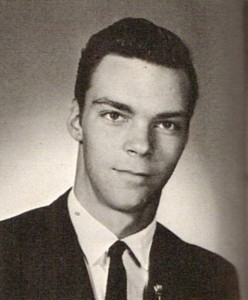
But he has no recollection of Jim Scott participating in any of the album sessions and says he was surprised to see him credited as a “guest artist, courtesy Bogus Records” on the album jacket. Jim concurs, noting that his contribution to “Swamp Witch” was “an afterthought,” if it occurred at all. He says his “40-something-year-old-memory” is “too foggy” to remember much but recalls visiting with Larry as the recordings were being made and “he was showing me how they were dubbing the tapes.” Jim points out that he “had a little bit of knowledge of dubbing because my dad had taught Gene Pitney how to play guitar and we had gone to some of his recording sessions.” Jim says the two “played around with it and I may have laid down the bass track for them that day, or they may have given me credit simply because I was the only one that was gonna go out and sell the album for them.”
Roger remembers that Jim happened to stop by the day the band recorded “Swamp Witch” and played the bass line.
Jim, who would soon leave for Vietnam, was then selling insurance and traveling through Southwest and Southside Virginia. As he traveled, he would carry boxes of the Virgil Caine album on his route, stopping at mom-and-pop music stores where they were sold on consignment. He even placed the LP in stores in the Richmond area and got a radio station in Rocky Mount to play some of the songs, but admits sales were flat and “we didn’t much more than break even on the cost of producing the album.”
While the sessions were progressing, Jim and Larry were also performing the college circuit as a duo, singing Simon and Garfunkel and the Everly Brothers, with Jim sharing an apartment with Larry and Paul when his insurance calls brought him through Danville. The two were offered regular work and could have quit their day jobs, but Jim says they decided against it because he was already traveling and had met too many musicians with “just as much or more talent” who “were lucky to make $10,000 a year.”
Roger says Virgil Caine never performed live and the members never aspired to be a touring band. With conflicting schedules and their scattered lifestyles “our idea was to kind of be like the Band… we just go to a farm house and make a record every once in a while, kinda be above the fray I guess, and we never did get into the playing in small clubs and trying to work at it that way. So, basically we were just a studio band for one recording.”
Larry says he has few memories of the sessions and never met Mike Campbell until he showed up at his house on Roger’s invitation. He describes Mike as “a very talented musician, much more so than comes out on the album.” Mike’s ad-libbed fretwork is featured prominently on “Biscuit High,” which Roger describes as “the instrumental highlight of the album.” He now wishes they had featured Mike’s guitar work on more of the songs.
Once the sessions were completed, Roger sent the master tapes to Capitol Records and agreed to pay $2,000 to have 1,000 copies of the album pressed. But Capitol engineers were unimpressed with the finished product and contacted Mannon, saying “the quality of the music needed to be bumped up” and offering to do “some studio work” on the tapes. When he enquired as to the total cost of the makeover, Roger was told there would be “a straight fee of $25 an hour,” with no guarantee of how long the sweetening might take. He declined and — in retrospect — believes he made the right decision, adding: “I’m not sure they could’ve done a whole lot to improve it.” Larry agrees, saying it would have “never come (out) quite right if it was just a little bit better quality.”
Roger cites “The Great Lunar Oil Strike, 1976” as his favorite recording, pointing out that it remains topical given the subsequent Valdez and Deepwater incidents. Jim likes “Swamp Witch” because it strikes him as being “almost mystical,” with references to cypress roots, armadillo meat and “where only dead men walk the swamps at night.” Larry prefers “Blackfoot Boojy,” a song about a barnyard cat, because of its shuffle rhythm and Mannon’s vaudevillian vocal.
With the recording finished, Roger began searching for a location for the album photos. He was looking for “an antiquarian setting” in keeping with the music. He found it on his grandfather’s farm off of Route 8, in Floyd. The three stood in front of an old clapboard building for the group shot. Larry remembers it was muddy that day and he wanted to look different, so he borrowed Paul’s hat. The back cover photo is a chicken house patched up with some windows from an old country store. The photographer was Bill Sumner, who was then editor of the Floyd Press.
Virgil Caine was selected as the name of the group and album. Virgil Caine was the fictional character of Robbie Robertson’s “The Night They Drove Old Dixie Down” from the Band’s second LP from 1969. The song describes the defeat of the South at the end of the Civil War. In the song, Caine rides “on the Danville train.” The Richmond and Danville Railroad was the main supply route into Petersburg where Lee’s Army of Northern Virginia held their defensive line to protect Richmond. The Danville supply train ran until General Stoneman’s Union cavalry troops tore up the tracks, as immortalized in the song.
The liner notes were sparse and listed only the members first initials and last names. Mannon says this was by intention and was designed to add to the “mystique” of the LP.
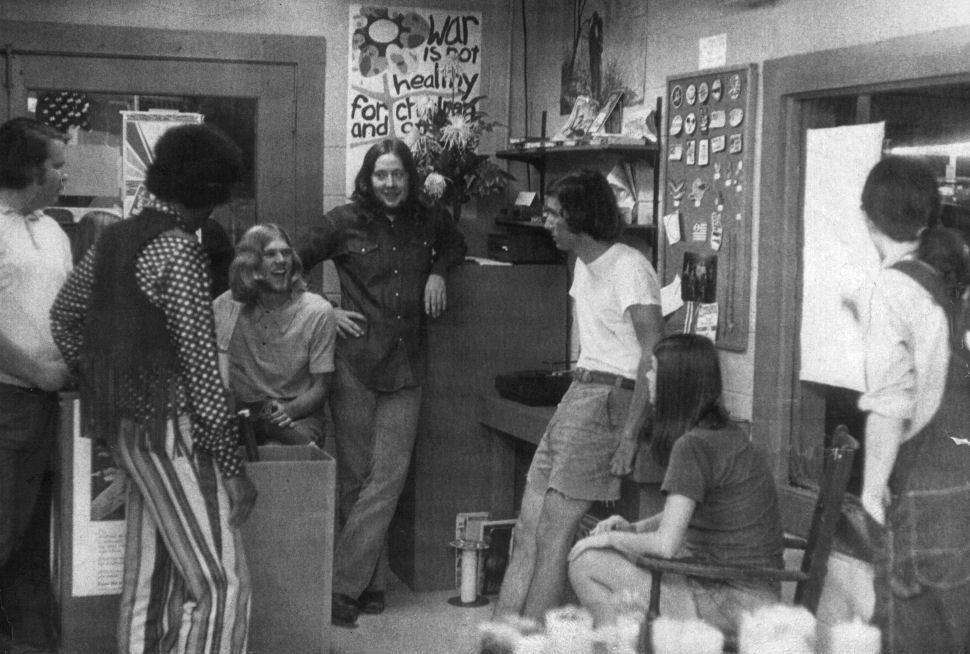
When the albums finally arrived, the group began distributing boxes to stores and selling copies to “aunts, uncles and in-laws.” Paul and Larry were in Danville at the community college and left a box at Euphoria Music. Months later, they retrieved the albums and were told that “none had been sold.”
Both made flyers promoting the album, which they posted around campus. Paul says they took typing paper and smeared one side with cooking oil, turned it over and used a hot iron to scorch it, which made the paper look like parchment. Then they added a picture of the album and a brief ad before burning the edges. This gave the effect of an Old West wanted poster.
Roger says the group considered recording a second album, but those plans were shelved because it took so long to break even on the first. He had written a “couple of songs” for the follow-up but they were never recorded by the band. He says when Virgil Caine “didn’t become rich and famous, we were just kind of satisfied with what we’d accomplished and moved on from there.”
While none of the members became professional musicians, all still play and four still live in Virginia.
Larry Janney still works with computers and is now the senior systems manager with a medical insurance company. He is bemused by the album’s sudden recognition and finds it hard to fathom. In fact, he deleted my initial telephone message, thinking it was a practical joke. He admits “the songs were a little weird but everything was weird about the seventies, so the fact that it sounded a little funny — well — that was okay, I guess. And the songs were a little mysterious, that was okay, too. Like I say, it was the 70s.” In retrospect, he wishes they had spent more time on the album and is unimpressed with the quality of the recordings, adding, “I think the songs were worth a lot more attention than we gave it, frankly.” He doesn’t own a copy of the album, having tossed his box when they warped in his truck on a hot summer’s day.
After 28 moves in 40 years, Jim Scott has come full circle, returning to Southwest Virginia as a circuit-riding preacher. Ironically, the four Methodist churches he pastors are based in Cripple Creek. Jim and Larry are step-brothers and still get together for family jam sessions on holidays. He remains proud of the album, saying “what little small part I played was wonderful.”
Paul Talley managed a True Value Hardware store for much of the past decade and hasn’t seen any of the members in more than twenty years. While the recordings are primitive and he never made a dime for his efforts, Paul says “it was all done for fun and we enjoyed it.”
Mike Campbell moved from Blacksburg to Salem, Va., where he continued teaching at Roanoke College. All of the other band members have lost touch with him, although Larry says years ago he ran into Mike “somewhere,” although he doesn’t recall the time or place.
Roger Mannon still lives in Floyd and works for the Floyd Press, a weekly newspaper owned by the Media General conglomerate. He points out that “you’re quick to see the genius in your own work,” but believes the album has finally found its rightful place. Roger was responsible for a limited reissue of the LP in 2011 and sees the recent acclaim as a “kind of a vindication of some of the songs, to learn that maybe it had reached the audience it was intended for, but I guess due to distribution and other issues it never really accomplished that at the outset. And you know, even if it’s decades later, I’m pleased that some people have heard it and appreciate it.”




